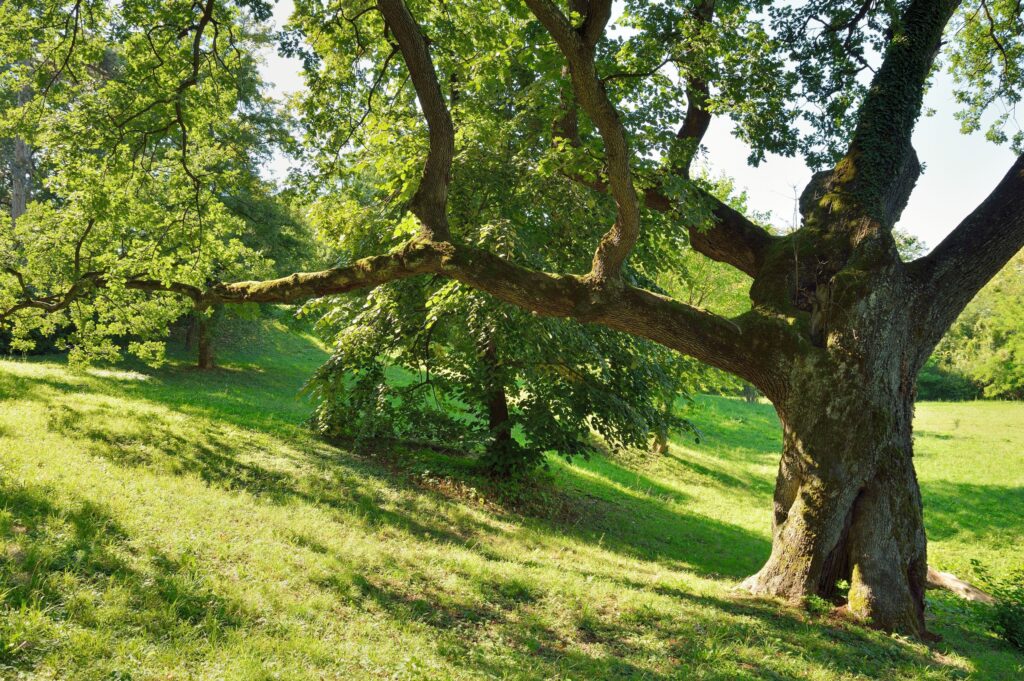While there are many potential causes, one of the most common causes of oak tree decline that we see in Charlottesville, VA, and surrounding areas is known as Hypoxylon Canker. This is a fungal disease that specifically targets this iconic tree species. If you’ve noticed a decline in your oak trees’ health and are unsure of the cause, here are some ways you can identify if this could be the culprit.
Understanding Hypoxylon Canker
Hypoxylon Canker is a fungal infection caused by Hypoxylon spp., which primarily affects hardwood trees, with oak trees being particularly vulnerable. This disease typically enters the tree through wounds or stressed areas, such as those resulting from improper pruning, severe weather conditions, or other environmental factors. Once inside, the fungus spreads rapidly, leading to the formation of cankers on the tree’s bark.
Identifying Hypoxylon Canker involves observing specific characteristics. Affected trees often exhibit large, sunken areas on the bark, accompanied by a distinctive black or gray discoloration. As the disease progresses, the cankers expand, causing the bark to crack and fall off. Additionally, a powdery substance may be present on the surface of the cankers.
Factors Making Oak Trees Susceptible to Disease
Several underlying factors contribute to the increased susceptibility of oak trees to Hypoxylon Canker and other diseases. These things include:
- Poor soil conditions
- Improper or harmful pruning practices
- Environmental stressors such as drought or flooding
- Tree injury to the trunk or roots from construction or other physical damage
These factors weaken oak trees, making them more susceptible to fungal infections. Additionally, the presence of other diseases or pests can further compromise the overall health of the tree, creating an environment conducive to the development of Hypoxylon Canker.
Addressing Oak Tree Decline
While there’s no specific treatment to eradicate Hypoxylon Canker completely, preventive measures are crucial to maintaining the health of your oak trees. If you suspect your oak tree is affected by Hypoxylon Canker or other diseases, consider the following steps:
- Professional Diagnosis: Consult with a certified arborist to accurately diagnose the problem and assess the extent of the infection.
- Pruning and Removal: Prune affected branches and remove dead wood to minimize the spread of the disease. In severe cases, the entire tree may need to be removed to prevent safety hazards.
- Soil Improvement: Enhance soil conditions around the tree by providing adequate nutrients and improving drainage. Healthy soil promotes tree vigor and resilience against diseases.
- Preventive Measures: Implement preventive measures such as proper pruning, regular tree inspections, and overall tree health maintenance to minimize the risk of future infections.
While Hypoxylon Canker poses a significant threat to oak trees in our area, it’s not the only thing to look for. Other potential factors affecting tree health include things like oak wilt, Actinopelte leaf spot, leaf blister, root rot, and pests.
Our priority is to keep your trees healthy and safe. If you notice signs of decline in your oak trees, contact us today for a free estimate and prompt intervention.

